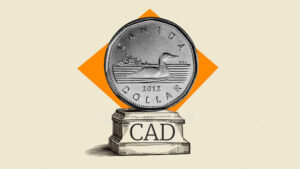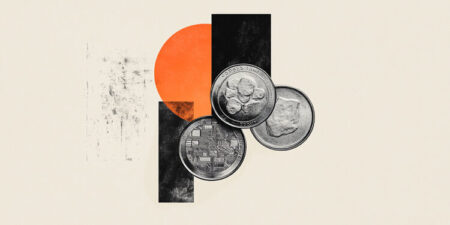- The Euro accelerates its decline on Monday as investors analyze the details of the EU-US trade deal.
- Eurozone products face a 15% tariff in exchange for strong EU investment and large purchases of energy and military equipment from the US.
- The US Dollar maintains a moderate positive tone as US data backs the Fed’s hawkish stance.
It was buy the rumour, sell the fact for the EUR/USD pair, which accelerated its reversal from last week’s lows on Monday’s Early European session. News that the European Union (EU) finally signed a trade agreement with the United States (US) has failed to provide any significant support to the Euro (EUR), while the US Dollar (USD) extends its recovery as investors brace for a hawkish Fed stance.
The common currency has dropped about 120 pips so far on Monday and is on track for its worst daily performance in months. The pair was rejected at 1.1770 on early trading and is trading at 1.1650 ahead of the US session opening, with technical indicators deep into bearish territory.
The European Commission President Ursula von der Leyen signed a pact with the US President Donald Trump, which will reduce tariffs on European products to 15%, half of the 30% rate announced by Trump earlier in July. In exchange, the Eurozone has committed to invest EUR 600 billion in the US and ramp up purchases of Gas and military equipment.
The deal has been unable to alter the recent balance of power between the Euro and the US Dollar, with the latest supported by relatively upbeat US data, which backs the Federal Reserve’s (Fed) “wait and see” stance and practically discards any interest rate change after this week’s monetary policy decision.
The economic calendar is thin today, with only the Dallas Fed Manufacturing Business Index providing some fundamental guidance during the US session. Investors are likely to remain calm ahead of a busier second half of the week, with Wednesday’s Federal Reserve decision and Friday’s Nonfarm Payrolls (NFP) report for July attracting the focus.
Euro PRICE Today
The table below shows the percentage change of Euro (EUR) against listed major currencies today. Euro was the strongest against the Australian Dollar.
| USD | EUR | GBP | JPY | CAD | AUD | NZD | CHF | |
|---|---|---|---|---|---|---|---|---|
| USD | 0.91% | 0.02% | 0.24% | 0.10% | 0.69% | 0.54% | 0.48% | |
| EUR | -0.91% | -0.90% | -0.64% | -0.81% | -0.21% | -0.37% | -0.43% | |
| GBP | -0.02% | 0.90% | 0.06% | 0.09% | 0.70% | 0.53% | 0.47% | |
| JPY | -0.24% | 0.64% | -0.06% | -0.14% | 0.40% | 0.27% | 0.37% | |
| CAD | -0.10% | 0.81% | -0.09% | 0.14% | 0.56% | 0.44% | 0.38% | |
| AUD | -0.69% | 0.21% | -0.70% | -0.40% | -0.56% | -0.17% | -0.23% | |
| NZD | -0.54% | 0.37% | -0.53% | -0.27% | -0.44% | 0.17% | -0.06% | |
| CHF | -0.48% | 0.43% | -0.47% | -0.37% | -0.38% | 0.23% | 0.06% |
The heat map shows percentage changes of major currencies against each other. The base currency is picked from the left column, while the quote currency is picked from the top row. For example, if you pick the Euro from the left column and move along the horizontal line to the US Dollar, the percentage change displayed in the box will represent EUR (base)/USD (quote).
Daily digest market movers: The EU-US trade deal fails to convince markets
- According to EC President von der Leyen, it was “the best deal we could get”, yet probably not the best deal investors were hoping for. The European Union will face 15% levies, which is not 30%, but neither the original zero-for-zero deal aimed at by Brussels. The 15% tariffs extend to pharmaceutical products and automobiles, the Eurozone’s main exports to the US. In exchange, Europe will have to invest EUR 600 billion in the US and buy EUR 750 billion of its Gas. The Euro reacted negatively as markets analysed the small letter in the pact.
- The US Dollar maintains a moderately bid tone from last week. Data released on Friday revealed that US Durable Goods Orders contracted by 9.3%, their worst performance in years, but still better than the 10.8% drop forecasted by market analysts. Beyond that, excluding transportation, the so-called “core Durable Goods” increased at a 0.2% rate, beyond the 0.1% expected.
- These figures come after an unexpected decline in the weekly US Initial Jobless Claims released on the previous day. Claims for unemployment benefits fell for the sixth consecutive week, reaching their lowest levels in the last three months, highlighting the resilience of the labour market and providing further leeway for the Federal Reserve to keep interest rates higher for longer.
- The Fed’s Monetary Policy Committee meets on Tuesday and Wednesday, and is widely expected to leave its benchmark Funds Rate unchanged at the current 4.25%-4.50% range. The main attraction of the event will be Fed Chairman Jerome Powell’s press release to see whether the latest trade deals and potential rebound in US GDP, which will be released earlier on the same day, can alter the bank’s cautious stance on further rate cuts.
EUR/USD has broken key support at 1.1700
,
EUR/USD came under strong bearish pressure at the European session opening and broke support at the 1.1700-1.1710 area in the early European session, confirming a Head & Shoulders (H&S) pattern, a classical figure for trend shifts. Technical indicators are pointing lower. The 4-hour Relative Strength Index (RSI) has plunged into negative territory below 50, and the MACD is showing an intense bearish momentum.
The pair has extended its reversal below the July 22 low at 1.1680, heading to the H&S´s measured target, which is coincident with the 18 and 21 lows, at 1.1617. The Euro should be heavily oversold if that level is reached, which would likely lead to some correction. Further down, the next downside target would be the mid-July low at 1.1555.
On the upside, the pair should return above 1.1710 to ease bearish pressure, and shift the focus towards the intraday high, at 1.1770, and the July 24 high at 1.1790 are likely to challenge bulls ahead of the multi-year high at 1.1830.
Central banks FAQs
Central Banks have a key mandate which is making sure that there is price stability in a country or region. Economies are constantly facing inflation or deflation when prices for certain goods and services are fluctuating. Constant rising prices for the same goods means inflation, constant lowered prices for the same goods means deflation. It is the task of the central bank to keep the demand in line by tweaking its policy rate. For the biggest central banks like the US Federal Reserve (Fed), the European Central Bank (ECB) or the Bank of England (BoE), the mandate is to keep inflation close to 2%.
A central bank has one important tool at its disposal to get inflation higher or lower, and that is by tweaking its benchmark policy rate, commonly known as interest rate. On pre-communicated moments, the central bank will issue a statement with its policy rate and provide additional reasoning on why it is either remaining or changing (cutting or hiking) it. Local banks will adjust their savings and lending rates accordingly, which in turn will make it either harder or easier for people to earn on their savings or for companies to take out loans and make investments in their businesses. When the central bank hikes interest rates substantially, this is called monetary tightening. When it is cutting its benchmark rate, it is called monetary easing.
A central bank is often politically independent. Members of the central bank policy board are passing through a series of panels and hearings before being appointed to a policy board seat. Each member in that board often has a certain conviction on how the central bank should control inflation and the subsequent monetary policy. Members that want a very loose monetary policy, with low rates and cheap lending, to boost the economy substantially while being content to see inflation slightly above 2%, are called ‘doves’. Members that rather want to see higher rates to reward savings and want to keep a lit on inflation at all time are called ‘hawks’ and will not rest until inflation is at or just below 2%.
Normally, there is a chairman or president who leads each meeting, needs to create a consensus between the hawks or doves and has his or her final say when it would come down to a vote split to avoid a 50-50 tie on whether the current policy should be adjusted. The chairman will deliver speeches which often can be followed live, where the current monetary stance and outlook is being communicated. A central bank will try to push forward its monetary policy without triggering violent swings in rates, equities, or its currency. All members of the central bank will channel their stance toward the markets in advance of a policy meeting event. A few days before a policy meeting takes place until the new policy has been communicated, members are forbidden to talk publicly. This is called the blackout period.
Read the full article here
















